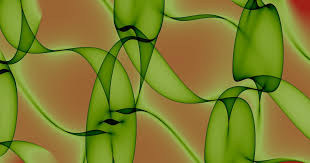In a groundbreaking achievement that heralds a new era of clean energy, Indian scientists have unveiled a revolutionary technology: an artificial leaf capable of harnessing sunlight to produce hydrogen fuel from water. This innovative device, developed by a team of researchers at the Council of Scientific and Industrial Research’s National Chemical Laboratory in Pune, represents a significant leap forward in the quest for sustainable energy solutions.
According to Dr. Chinnakonda S Gopinath, a senior scientist leading the project, the development of this artificial leaf marks a crucial milestone in the pursuit of renewable energy sources. With hydrogen generation from renewable resources poised to become the ultimate solution to the world’s energy and environmental challenges, the advent of this technology holds immense promise for a cleaner, greener future.
The device operates on a principle inspired by nature, mimicking the intricate architecture of plant leaves to harness the power of sunlight. Comprising stacked semiconductors arranged in a manner akin to natural leaf structures, the artificial leaf absorbs sunlight and initiates a process whereby electrons are set in motion, generating electric current. This current, in turn, facilitates the almost instantaneous splitting of water molecules into hydrogen and oxygen, with hydrogen emerging as the primary fuel source.
One of the most compelling aspects of this breakthrough technology is its potential to revolutionize the way hydrogen fuel is produced. Unlike conventional methods that rely on fossil fuels and emit harmful carbon dioxide emissions, the solar hydrogen produced by the artificial leaf offers a clean and sustainable alternative. With water as its main byproduct, this form of hydrogen fuel represents a significant step towards mitigating climate change and reducing reliance on finite fossil fuel resources.
Moreover, the scalability and practicality of this innovative approach offer further cause for optimism. Dr. Gopinath highlights the simplicity and feasibility of the method, emphasizing the potential for widespread adoption and implementation on a larger scale. Indeed, the researchers estimate that a palm-sized device based on this technology could produce up to six liters of hydrogen fuel per hour, laying the groundwork for future applications in various sectors.
While further research and development are needed to optimize and refine the technology, Dr. Gopinath envisions a future where cars powered by hydrogen generated from artificial leaves become a reality. With auto manufacturers already exploring hydrogen-powered fuel cells as a viable alternative to traditional fossil fuels, the potential for widespread adoption of this clean energy solution is immense.
In conclusion, the development of an artificial leaf capable of producing solar hydrogen represents a landmark achievement in the quest for sustainable energy solutions. By harnessing the power of sunlight to generate clean, renewable fuel, Indian scientists have demonstrated their commitment to innovation and environmental stewardship, paving the way for a brighter and more sustainable future for generations to come.




